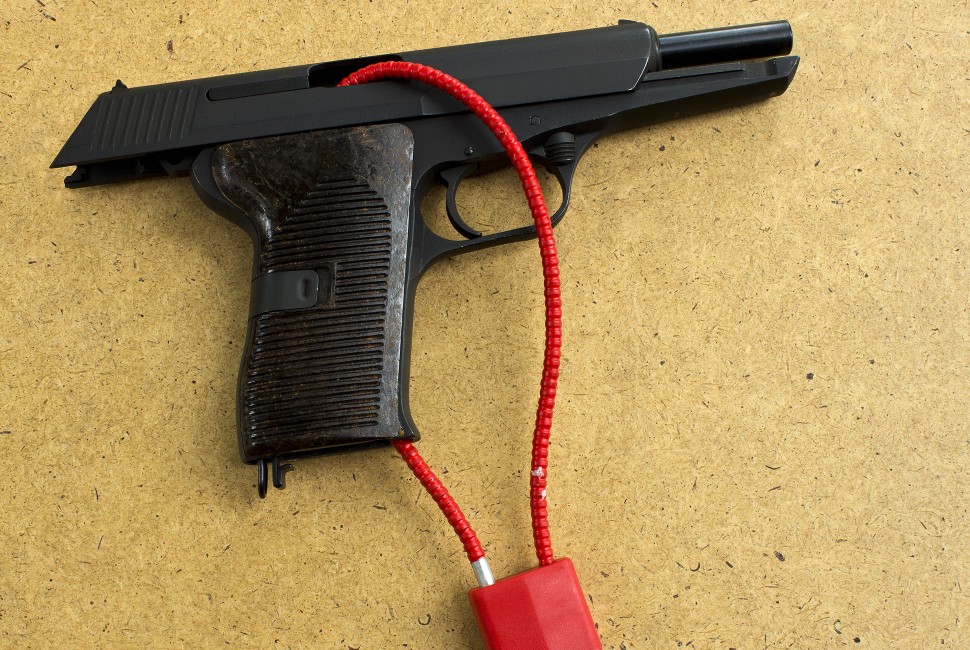
- Firearm suicide among minority youth has steeply risen over the past decade
- Examined 694 patients ages 5 to 17 during primary care visits with 47 doctors
- Study suggests ways to improve implementing the program during a larger trial
A secure firearm storage program in which pediatricians engage with parents on the importance of secure storage has been proven to help keep firearms out of the hands of young people. But a new study from scientists at Northwestern Medicine, the University of Pennsylvania, Henry Ford Health and Kaiser Permanente Colorado has found preliminary evidence that this program may not be reaching all parents equitably.
In the new study, scientists examined a well-established firearm violence-prevention program offered to parents of children ages 5 to 17 during routine pediatric checkups as a way to universally prevent suicide. They discovered preliminary evidence that the program is often not offered to parents of girls and some racial and ethnic minorities.
By fixing these unjust — and avoidable — access issues, the study’s authors hope the program can evenly reach all communities.
“One in three homes in the United States have a firearm,” said principal investigator and senior author, Rinad Beidas. “Half of suicide deaths are due to firearms. Secure firearm storage is an important target for reducing suicide deaths in young people and pediatricians are trusted messengers who can discuss the importance of secure firearm storage with parents and offer locking devices. By prospectively examining potential inequities to implement evidence-based interventions, we can better reach and benefit all individuals.”
The study was recently published in the journal Preventive Medicine.
Beidas is the chair of the department of medical social sciences and the Ralph Seal Paffenbarger professor of medical social sciences at Northwestern University Feinberg School of Medicine.
“With rising rates of suicide among racially and ethnically minorized youth, we must ensure that firearm safety programs deployed in health care settings reach all populations to realize the goal of keeping young people safe,” said lead author Katelin Hoskins, assistant professor in the department of biobehavioral health sciences at Penn Nursing. “Beyond clinical research, our work highlights the potential for health systems to engage in data-driven monitoring for inequities to ensure that implementing firearm violence prevention programs translates into meaningful impact for all families.”
In the study, the scientists focused on S.A.F.E. (Suicide and Accident prevention through Family Education) Firearm, an evidence-based program in which doctors distribute free cable locks to all parents or guardians during a routine pediatric primary care appointment and have a brief discussion about how to securely store their firearms. If the parents self-disclose they don’t own firearms, the physician can discuss how to inquire about firearm safety at friends’ and family members’ houses.
The scientists undertook a unique five-step pre-trial analysis focused on equity-informed implementation. They found:
- Parents/guardians of children with medical complexity (including autism or ADHD) were not overlooked by the program
- There were potential signals of inequities by race and ethnicity but these effects must be interpreted with caution. Specifically, there were greater odds of documentation reach, discussions and lock offers for non-Hispanic white young people compared to non-Hispanic other groups, which included American Indian/Alaska Native, Asian, multiracial, native Hawaiian or other Pacific Islander, and other racial groups as reported in the electronic health record
- Some clinicians were more likely to deliver the program to parents of boys than girls
“While overall rates of firearm injury are higher among males than females, program delivery should not be limited by population-level data,” the study reads. “It is critical that clinicians consistently provide guideline-concordant care so that girls are not marginalized in well-intentioned suicide prevention efforts.”
The two implementation strategies Beidas and her co-authors will test in the larger, ongoing study include: (1) a “nudge,” or prompt, from an electronic health record during the doctor visit and (2) an electronic health record “nudge” paired with a trained professional working with the doctor to support and problem solve while the doctor learns to teach the firearm safety program.
“The implementation strategies we’ve suggested for the larger trial have the potential for making sure that all of the things we deploy reach all populations and to ensure that we are keeping all of our young people safe,” Beidas said.
‘Implementation science is closing that huge chasm’
Beidas is an internationally recognized leader in the field of implementation science. Her research broadly focuses on designing, implementing and evaluating strategies to make it easier for clinicians, leaders and organizations to improve the quality and equity of health care.
“We spend a lot of money on discoveries to improve peoples’ lives but we only invest a very minuscule amount of money on actually getting people to do those things,” Beidas said. “Implementation science is closing that huge chasm. This example represents the potential of the type of work that we do in implementation science.”
The pilot study, called Adolescent and child Suicide Prevention in Routine clinical Encounters (ASPIRE), included five pediatric primary care clinics in two health system sites. The scientists examined a total of 694 patients during well-child visits with 47 clinicians. The larger trial is ongoing and includes 30 clinics and more than 150 clinicians.


Leave a Reply